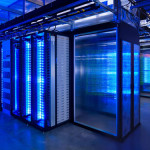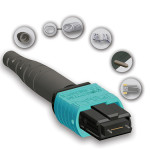Data center planning has become somewhat of a specialty in the architectural world. Most architectural firms either have an RCDD (Registered Communications Distribution Designer) on staff, or acting as a consultant to assist with the specialized equipment not addressed by their Electrical Engineers and Mechanical Engineers. The equipment housed within the center is complex each with specific requirements for heating, cooling, power budgets and spatial considerations. A typical data center contains the following components:
- Computing and network infrastructure (cabling, fiber, and electronics)
- NOC or NOC communications and monitoring
- Power distribution, generation and conditioning systems (Uninterruptible Power Supplies, generators)
- Environmental control and HVAC systems
- Fire Detection and Suppression systems (typically halon or other non-water suppression)
- Physical security and access control prevention, allowance, and logging
- Circuit breaker protection (lightning protection in some cases)
- Proper lighting
- Minimum of 8’5” ceiling height
- Grounding
- Racks and cabinets for equipment
- Pathway: Raised access flooring and/or overhead cable tray
- Carrier circuits and equipment
- Telecommunications equipment
- Proper clearances around all equipment, termination panels and racks
Data centers must be carefully planned PRIOR to building to assure compliance with all applicable codes and standards. Design considerations include site and location selection, space, power and cooling capacity planning, floor loading, access and security, environmental cleanliness, hazard avoidance and growth. In order to calculate the above needs, the architect and RCDD must know the components that will be housed in the data center including all electronics, cabling, computers, racks, etc. To provide this list it is important to predict the number of users, application types and platforms, rack units required for rack mount equipment and most importantly, expected or predicted growth.
Anticipating growth and technological changes can be somewhat of a “crystal ball” prediction. With the possible combination of storage islands, application islands, server platforms and electronic components literally being factorial, planning is as important to a data center as the cabling is to a network. The data center will take on a life of its own and should be able to respond to growth and changes in equipment, standards and demands all while remaining manageable and of course, reliable. Larger data centers are designed in tiers or zones (sometimes on different floors) with each tier performing different functions and generally with different security levels.
Redundancy may be between different levels or different geographic locations depending on the needs of the users of the facility.








